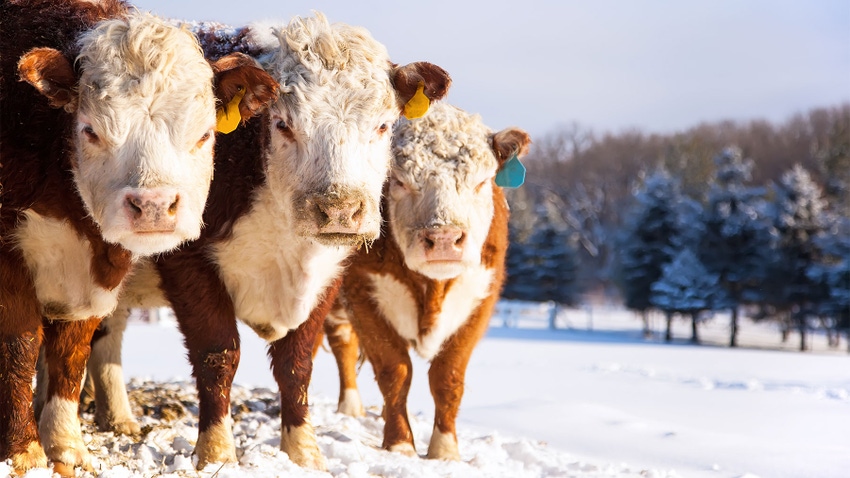December 19, 2023

by Ted Wiseman
Winters can be a challenge, especially for those with livestock. Here’s a list of five management tips to keep in mind as you prepare to manage cattle through another winter:
1. Nutrition management. Winter conditions can alternate between mud and snow and back to mud. Producers need to be prepared for proper nutrition management for cattle. There have been numerous research studies that have shown the effects of extreme cold, mud and wind.
Producers will need to monitor and adjust feed regimens by incorporating high-quality forages rich in nutrients. Supplemental feed, with a careful balance of protein and energy, becomes essential to meet the increased caloric demands during colder months. This strategy ensures beef cattle maintain optimal body condition, setting the stage for a healthy and productive spring calving season.
2. Water provisions. Unpredictable winter temperatures underscore the importance of providing plenty of water. Water sources will need to be constantly monitored, coupled with the use of heaters or insulated water systems to prevent freezing.
Keeping water available at all times is extremely important to maintain adequate hydration for proper digestion, metabolism and overall well-being.
3. Shelter strategies. Shelter considerations include using windbreaks and strategically positioning three-sided shelters to shield cattle from the extreme winds. Beyond offering protection from the elements, maintain dry bedding within shelters. This not only insulates cattle against the cold ground, but it also provides a comfortable refuge, reducing stress and minimizing the risk of respiratory issues.
By thoughtfully addressing shelter needs, producers can be prepared to provide protection from the elements during the winter months when needed.
4. Tailored health management. Winter conditions also emphasize the importance of a health management plan tailored to regional challenges. This includes vaccination schedules aligned with the specific threats posed by the winter environment.
Plan strategic parasite control, especially for lice, during the winter months and conduct routine health checks.
5. Body condition. The practice of regular body condition scoring takes on heightened significance in a winter-care regimen. Closely monitoring the physical condition of cattle, assessing fat cover and muscle condition, allows producers to make informed adjustments to feeding programs.
By prioritizing body condition scoring, producers can ensure their cattle maintain the ideal weight and energy reserves, enhancing their ability to withstand the physiological challenges imposed by winter and promoting long-term herd health.
Wiseman is the OSU Extension ag and natural resources educator in Perry County. He is also a member of the OSU Extension Beef Team that publishes the weekly Ohio BEEF Cattle letter, which can be found at beef.osu.edu.
Read more about:
BeefYou May Also Like




